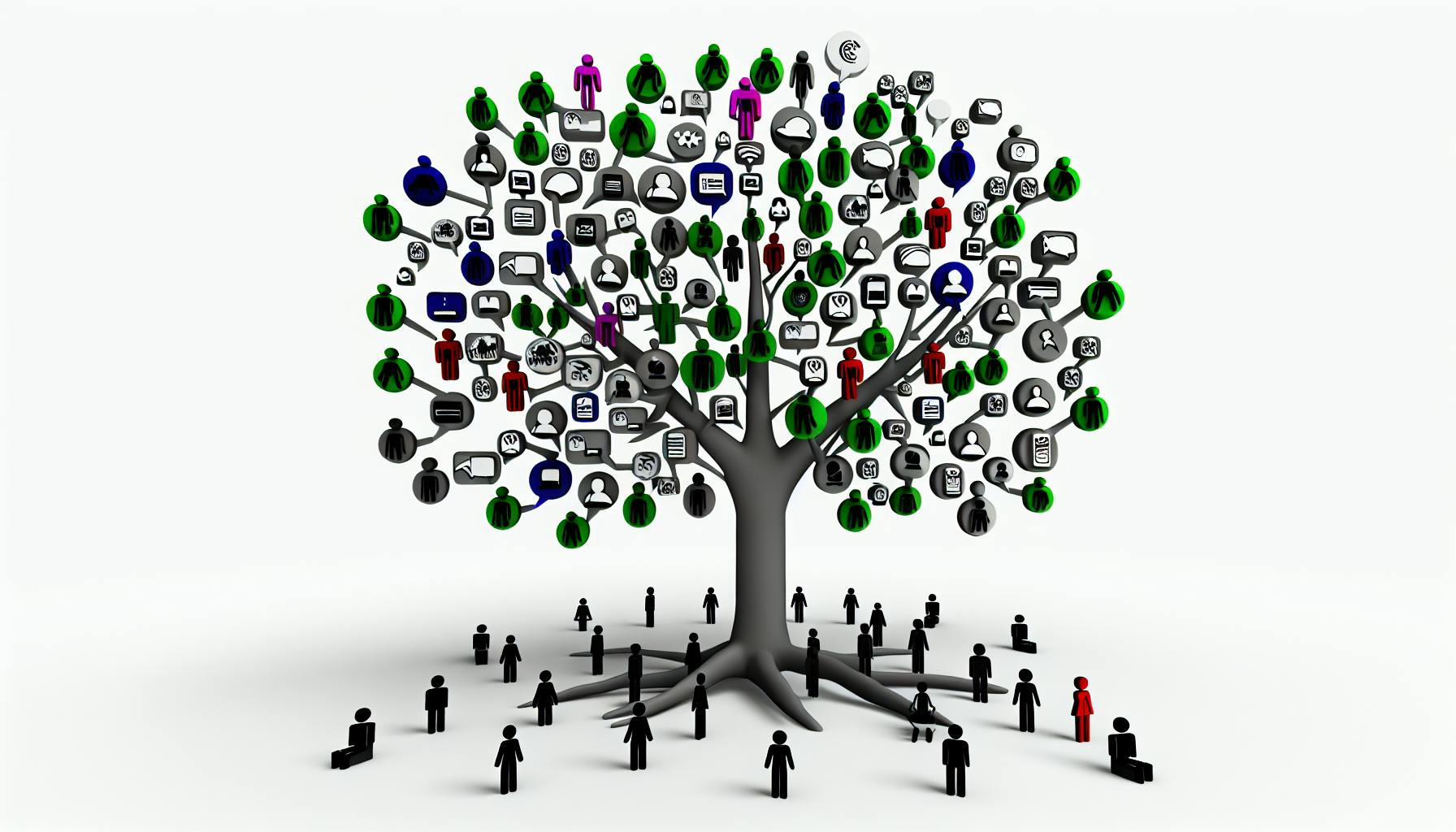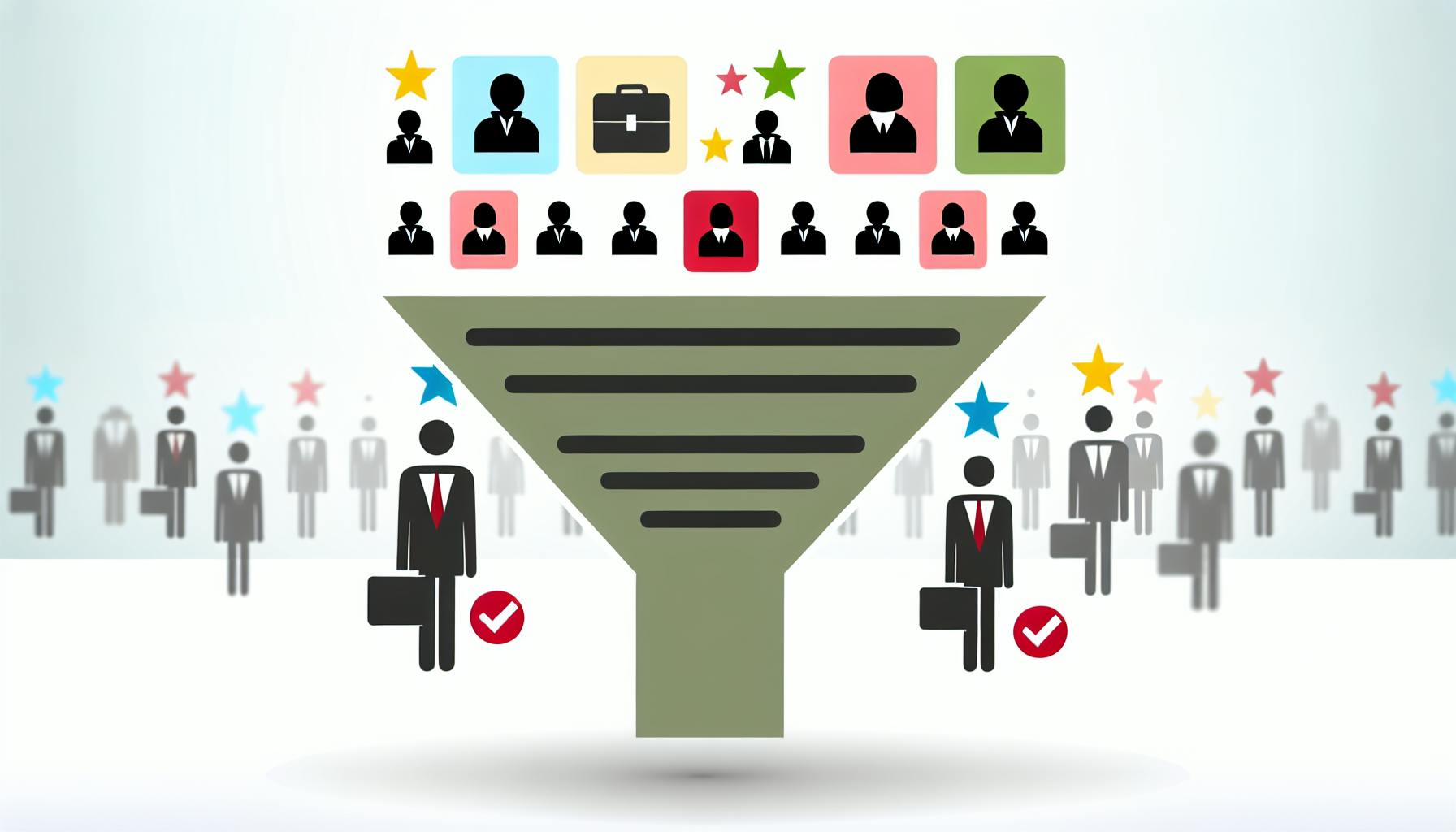Selecting the right learning and development (L&D) technologies is crucial, yet challenging.
This guide will help HR professionals evaluate L&D platforms to find the best fit for their organizations' needs, ensuring maximized return on investment.
We'll explore key considerations around scalability, user experience, integration capabilities, and more to inform your L&D technology decision making process.
Introduction to Learning and Development Technologies
Learning and development (L&D) technologies refer to software, platforms, and tools that organizations use to facilitate employee training, upskilling, and professional growth. As the workplace evolves, these technologies are becoming increasingly critical for attracting and retaining top talent, driving productivity, and gaining a competitive edge.
Exploring the Landscape of Learning and Development Tools and Strategies
There are a wide variety of L&D technologies available today that serve different functions:
- Training software: Offers features like course authoring, virtual classrooms, quizzes, and more to deliver training content. Examples include Docebo, TalentLMS, SAP Litmos.
- eLearning platforms: Enable organizations to create, deliver, and track online courses and microlearning. Examples include Cornerstone OnDemand, Saba Cloud.
- Learning management systems (LMS): Centralize and manage all aspects of learning including registration, delivery, testing, and record-keeping. Popular LMS examples include SAP SuccessFactors, Docebo.
These tools aim to create impactful, immersive learning experiences that align with the needs and preferences of modern learners through innovations like gamification, virtual reality simulations, and adaptive learning.
Advantages of Implementing New Technology in Learning and Development
Integrating the latest L&D technologies can benefit organizations in many ways:
- Increased learner engagement: Interactive features like badges, leaderboards make learning fun and engaging. Immersive platforms also capture attention better.
- Flexibility: Employees can learn at their own pace, on any device. Mobile adoption makes learning accessible anywhere.
- Data and analytics: Insights into learner behavior, content effectiveness help create targeted, personalized learning.
- Cost savings: eLearning solutions lower travel costs associated with in-person training.
While technology is pivotal, organizations must balance technology with the human factor in learning. The most successful L&D strategies combine digital tools with instructor-led sessions, coaching, and mentoring.
What are the new technologies in L&D?
Emerging technologies like artificial intelligence (AI), virtual reality (VR), and machine learning are transforming the field of learning and development (L&D). Here are some of the latest innovations that are changing how organizations train and develop their people:
Immersive learning platforms
- VR and augmented reality (AR) are creating highly immersive and engaging learning experiences. These platforms allow learners to practice skills in simulated real-world environments.
- For example, VR safety training puts learners directly into hazardous situations to build muscle memory of proper protocols.
AI-driven personalization
- AI algorithms can track and analyze each learner's strengths, weaknesses, and preferences to create customized training programs.
- This level of personalization helps employees develop skills faster and translates to better job performance.
Data analytics and metrics
- Sophisticated data analytics provide insights into the effectiveness of various L&D initiatives.
- Metrics like completion rates, engagement levels, and impact on business KPIs help L&D teams continually optimize their efforts.
Mobile and microlearning
- With remote and hybrid work on the rise, mobile and bite-sized learning formats allow employees to build skills anytime, anywhere.
- Microlearning breaks training into small, digestible pieces that fit into busy schedules.
The pace of change in L&D technologies is rapid. Staying updated on the latest innovations will be key for organizations looking to build a competitive workforce.
What is learning and development in tech?
Learning and development (L&D) in tech refers to training programs and initiatives aimed at building the skills of technical teams and helping them stay updated with the latest technologies. As the tech landscape evolves rapidly, L&D plays a crucial role in ensuring organizations can adopt new solutions and ways of working.
Some key aspects of L&D in tech include:
-
Technical training: Courses and workshops focused on building skills in specific programming languages, frameworks, cloud platforms, cybersecurity tools, and more. These help developers, IT staff, and other technical roles level up their expertise.
-
Product training: Training on new software, hardware, and other technology products that teams will use. This allows for effective adoption and utilization.
-
Process training: Education around software development methodologies like Agile and DevOps that emphasize collaboration and continuous delivery.
-
Leadership development: Programs tailored for technical managers seeking to improve their team leadership abilities as they guide projects and talent.
-
Reskilling programs: Initiatives to equip technically-skilled employees with new competencies like data science or UX design to align with changing organizational requirements.
-
Compliance training: Required learning focused on topics like ethical codes of conduct, data privacy, and computer security best practices.
The right learning and development technologies allow organizations to deliver training at scale while creating engaging, personalized experiences tailored to different technical roles and skill levels.
What is L&D tool?
Learning and Development (L&D) tools refer to a range of online learning software solutions and platforms that facilitate the process of upskilling, training, and developing both new and existing employees. These tools aim to provide impactful and immersive learning experiences that align with the needs and preferences of modern learners.
Some key features of modern L&D platforms include:
- Mobile-friendly and accessible on any device
- Interactive elements like gamification, simulations, and virtual reality
- Social learning through discussion forums and messaging
- Analytics to track learner progress and content performance
- Integration with existing HR systems
- Customizable courses and microlearning content
Effective L&D tools move beyond old-school eLearning by focusing on real-life scenarios and providing practical examples. The goal is to create engaging and immersive platforms that appeal to the human factor in learning.
When evaluating L&D solutions, key criteria include:
- User experience: Is the platform intuitive and easy to navigate for both learners and administrators?
- Content types: Does it support modern formats like video, simulations, mobile apps?
- Analytics: Does it provide insights into learner progress, content gaps, and opportunities for improvement?
- Integration: Can it connect with existing HR tech stacks to enable seamless transfer of data?
Carefully assessing these factors can help identify the right learning and development platform for your organization's specific requirements. The key is finding a scalable solution that evolves alongside the needs and preferences of your learners.
What are L&D systems?
Learning and development (L&D) systems refer to software platforms and tools that enable organizations to provide impactful learning experiences to their employees. These systems aim to align with the needs and preferences of their learners by incorporating features like:
- Immersive simulations and scenarios
- Microlearning
- Social and collaborative learning
- Personalized recommendations
- Integrations with existing HCM systems
Effective L&D platforms focus on creating engaging and immersive learning experiences that employees can easily access on-demand. They incorporate real-life scenarios and provide practical examples to make the learning stick.
The key benefits of using modern L&D systems include:
-
Enhanced skills development: L&D systems allow organizations to rapidly skill, upskill, and reskill their workforce. Employees can learn in-demand skills like data analytics, coding, etc.
-
Improved engagement: With features like gamification, social learning etc., modern L&D platforms drive higher engagement.
-
Flexibility: Cloud-based systems support mobile learning and give employees the flexibility to learn at their own pace.
-
Analytics: Data-driven insights help track learner progress, content effectiveness, and provide a tangible ROI on L&D spending.
As per Deloitte’s 2022 Human Capital Trends report, 54% of executives plan to increase their investment in learning programs. Adopting modern and engaging L&D platforms is key to attracting and retaining top talent.
sbb-itb-d78b90b
Identifying the Best L&D Platforms for Your Organization
When evaluating learning and development (L&D) platforms, there are several key criteria HR professionals should prioritize to ensure the technology aligns with their organization's needs:
Prioritizing Engaging and Immersive Platforms for User Experience
The user experience and interface design of an L&D platform plays a major role in its effectiveness. Platforms should provide:
- Intuitive navigation and aesthetically pleasing designs to minimize the learning curve.
- Immersive features like gamification, simulations, and interactive content formats to drive engagement.
- Support for various multimedia content types like video, audio, animations to cater to different learning styles.
Platforms that focus on exceptional UX deliver more impactful learning experiences.
Mobile Adoption: Ensuring Accessibility and Flexibility
With remote and hybrid work models on the rise, evaluating mobile accessibility is crucial when selecting L&D platforms. Key considerations include:
- Responsiveness across devices like smartphones and tablets for mobile-friendly learning.
- Offline access features to enable learning with or without internet connectivity.
- Mobile app availability providing flexibility and portability for users.
Prioritizing mobile-readiness ensures employees can learn whenever and wherever works best for them.
Leveraging Analytics for Measuring Training Impact
Robust analytics should provide visibility into:
- Learner progress tracking to identify knowledge gaps needing reinforcement.
- Content performance metrics highlighting engagement levels per course.
- Real-time dashboards to inform strategies and resource allocation decisions.
Using data and insights, organizations can optimize learning programs and demonstrate clear ROI from their L&D investments.
Comprehensive Features of Learning and Development Software Tools
Learning and development (L&D) technologies have evolved rapidly in recent years to provide more immersive and engaging experiences. As organizations evaluate options, there are key features to consider that directly impact learning outcomes:
Tailoring Experiences: Customization and Personalization in L&D
The most effective learning platforms allow admins to:
- Build custom courses with drag-and-drop editors
- Curate content recommendations based on individual interests
- Personalize learning paths adapting to knowledge gaps
This level of flexibility caters to diverse learning styles and preferences. Assess how easily admins can customize and configure courses, recommendations, assessments and learning paths for each learner.
Simulating Success: The Role of Real-life Scenarios in Learning
Immersive simulations incorporate:
- Real-world situations like sales calls or patient consultations
- Practical application of skills through role play
- Feedback loops to iterate and improve
Evaluating the quality and variety of real-life scenarios can indicate how engaging and practical the learning will be. Well-designed simulations aligned to specific skills boost confidence and readiness.
Fostering Community Through Social and Collaborative Learning Features
Humans learn best from each other. Collaborative features like:
- Discussion forums
- Peer groups and social networking
- Mentorship opportunities
Bring the human element into digital learning. Assessing forum quality and integration with other systems provides insight into the level of community engagement and knowledge sharing.
Assessing Learning and Development Systems for Effective Implementation
Seamless Integration With Existing Training Tools and Systems
When evaluating learning and development (L&D) platforms, it is crucial to assess their integration capabilities with your organization's existing systems. This ensures that the new L&D technology can seamlessly connect with essential workplace tools like your HRIS, LMS, collaboration software, and more.
Key questions to ask potential vendors include:
- Does the platform offer out-of-the-box integrations? Pre-built connectors to leading HCM suites like Workday, SAP SuccessFactors, and Cornerstone can accelerate implementation.
- What APIs and custom integrations are available? Platforms with open and well-documented APIs make it easier to build custom connections.
- Can user and training data flow bi-directionally? Bi-directional data sharing ensures all systems have updated employee skills, training records, and performance data.
- How easy is it to embed and share content? Seamless content embedding enables distributing training across multiple tools like Slack, Microsoft Teams, your intranet, and more.
Selecting L&D technology with robust integration capabilities avoids data silos, reduces administrative tasks, and creates a unified learning ecosystem across your workplace stack.
Ensuring Continuous Evolution with Ongoing Support and Updates
The L&D landscape evolves rapidly, so it's vital your platform can keep pace. When evaluating vendors, assess both the initial and ongoing support and platform iteration they provide.
Key aspects to examine include:
- Customer success offerings - Do they provide an account manager, training resources, community forums? Ongoing enablement ensures you fully leverage capabilities.
- Product roadmap transparency - Can they share upcoming features and innovations? This avoids investing in stale technology.
- Release frequency - Frequent updates signal agility and commitment to advancing functionality.
- Personalization for your needs - Can they customize platform experiences and recommend new features catered specifically to your organization? This tailors technology to your evolving requirements.
Prioritizing these elements future-proofs your investment in L&D technology. It enables continuously aligning skills development with strategic talent priorities as your needs change. Selecting vendors invested in customer success and constant platform enhancement ensures maximum value.
Strategizing for the Future with an eLearning Modernization Strategy
Organizations looking to expand their learning and development capabilities can benefit greatly from crafting an eLearning modernization strategy. This involves taking a strategic approach to adopting new technologies and evolving training methods across the organization.
Evaluating Current Training and Development Tools in HR
The first step is assessing your current L&D landscape. Conduct surveys and interviews with employees at all levels to understand:
- What training methods are currently being used (instructor-led, online courses, microlearning, etc.)
- How effective employees feel the current methods are
- What types of training they find most engaging and impactful
- Any gaps or pain points in accessing or benefiting from training
Compile the findings into a gap analysis report highlighting areas for improvement. Provide recommendations for learning technologies that could help fill these gaps by:
- Increasing accessibility and flexibility of training
- Offering more engaging, immersive methods like VR/AR simulations
- Providing personalized learning paths tailored to each employee
- Scaling training across the organization faster and more affordably
Tie recommendations back to key talent development priorities and business goals to show how modernizing L&D supports organizational objectives.
Crafting a Compelling Business Case for L&D Technology Investment
With clear data and recommendations in hand, build a compelling business case for learning technology investment focused on:
Cost Savings and Efficiency Gains
- Reduced costs per learner compared to instructor-led training
- Lower employee downtime and travel costs
- Increased learner throughput and faster ramp up for new hires
- Scalability across the organization and employee self-service
Performance Benefits
- Improved employee proficiency and productivity
- Increased engagement, motivation, and retention
- Greater innovation and agility fueled by skills development
- Overall talent competitiveness and future-proofing the workforce
Customer and Revenue Impact
- Enhanced customer experience through better trained employees
- Increased sales, fewer defects, higher quality products
- Competitive advantage in your industry for winning top talent
Support claims with credible data sources, calculate ROI timeframes, highlight success stories from competitors or other industries, and align proposals with strategic organizational goals.
Getting stakeholder buy-in starts with showing how L&D technology boosts key talent and business metrics. An eLearning modernization strategy allows organizations to unlock greater value from human capital - their most important asset.
Conclusion: Integrating Learning and Development Technologies for Organizational Growth
Aligning Learning and Development Resources with Organizational Goals
As organizations evaluate potential learning and development technologies, it is critical that they assess how well each platform aligns to both current and future learning program goals, as well as wider business objectives. Key considerations include:
-
Evaluating which skills are most critical for the organization to develop in its workforce over the next 3-5 years based on strategic plans and priorities. Selecting tools that allow building impactful learning experiences focused on those skill areas.
-
Assessing how well a platform's available learning content, features and analytics tie back to organizational talent development goals around leadership, innovation, customer service etc.
-
Considering ease of custom content development, to ensure the platform can fully adapt to emerging organizational training needs over time.
Reflecting on Implementation Complexity and Ongoing Support Needs
When selecting a new learning and development platform, organizations should carefully evaluate required implementation timelines, potential change management needs, and ongoing support requirements. Key reflections include:
-
Realistically assessing internal bandwidth - can current teams manage a complex implementation process or is external help required? What potential business disruption might occur?
-
Considering ease of use and intuitiveness of the platform interface to minimize change management needs for transitioning users.
-
Evaluating quality and responsiveness of vendor customer support models before committing, to ensure learning programs have strong ongoing technical guidance.
Carefully weighing these practical considerations against core platform functionality and content will lead to better overall learning technology decisions.


